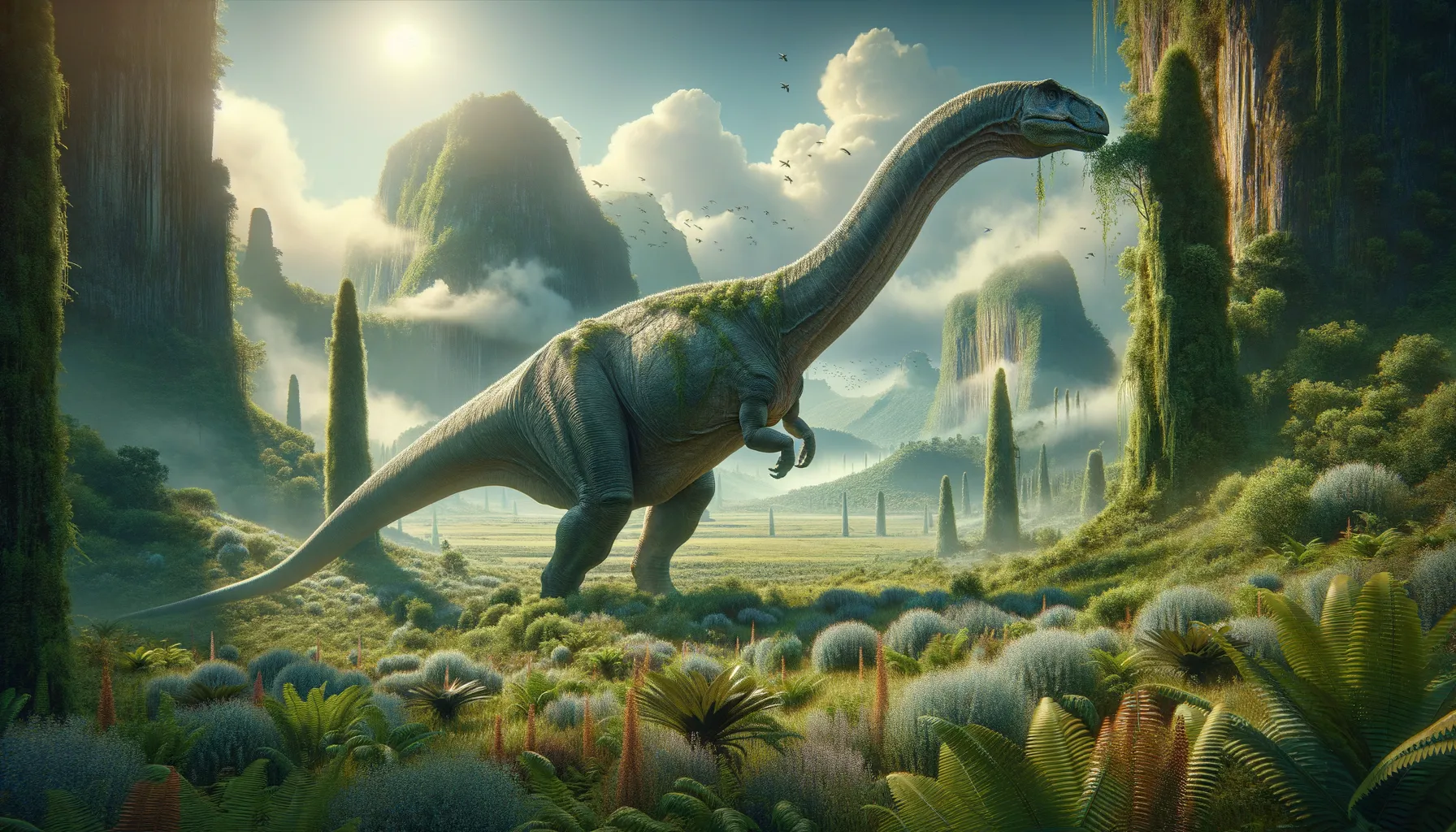
Pelorosaurus
The gentle giant of the Cretaceous era.
Period
Cretaceous
Length
About 50 feet long.
Height
Approximately 40 feet tall.
Weight
Weighed around 20 to 30 tons.
Pelorosaurus was an enormous herbivorous dinosaur that roamed the Earth during the Cretaceous period. It belonged to the group known as sauropods, with a long neck and tail. Paleontologists discovered its fossils in the United Kingdom, shedding light on its existence and habits. Its immense size provided protection from predators, and its herbivorous diet included a variety of plants, which it likely reached with ease using its long neck.
Diet
Pelorosaurus was an herbivore, feeding primarily on leaves, twigs, and other plant material. Its long neck allowed it to reach vegetation that was inaccessible to smaller herbivores.
Hunting
As a herbivore, Pelorosaurus did not engage in hunting activities. Instead, it would have spent much of its time foraging for food in the form of plants.
Environmental challenges
During its time, Pelorosaurus faced various environmental challenges, including changes in vegetation and climate. Predators existed, but its large size provided a significant deterrent. Natural disasters like floods or droughts could also have posed threats to its habitat and food supply.
Speed
Slow-moving due to massive size.
Lifespan
Estimated to live around 70 to 80 years.
First discovery
Discovered in England in the 19th century.
Fun Facts
- Pelorosaurus was a massive dinosaur that lived about 125 million years ago during the Early Cretaceous period.
- Its name means 'monstrous lizard' due to its enormous size and impressively long neck.
- Pelorosaurus was one of the first sauropods to be identified from England, showcasing Europe's rich dinosaur history.
- This dinosaur is believed to have been a herbivore, munching on plants with its peg-like teeth.
- It probably used its long neck to reach high vegetation that other herbivores couldn't access.
- Though not as famous as some dinosaurs, Pelorosaurus helps paleontologists understand the diversity of sauropods.
- Pelorosaurus belonged to the group of dinosaurs known as sauropods, which includes some of the largest land animals to have ever lived.
Growth and Development
Pelorosaurus grew rapidly in its early years, gaining size to deter predators. Its development relied heavily on consistent food supply and environmental stability. Juvenile Pelorosaurus likely stayed in groups for protection and social learning.
Habitat
Pelorosaurus thrived in floodplains and forested areas, where vegetation was abundant. Its environment included diverse plant life, providing a rich source of food. The climate in its habitat was warm and humid, which supported lush vegetation growth.
Interaction with other species
Pelorosaurus likely coexisted with other herbivorous dinosaurs, competing for food sources. Its size enabled it to share its habitat with smaller dinos without much conflict. Predatory species would have been a threat, but mainly to juveniles.
Natural lifespan
Pelorosaurus could naturally live for several decades, up to 80 years.
Reproduction
Pelorosaurus reproduced by laying eggs, possibly in nests built on the ground. Female Pelorosaurus may have guarded the nests to protect them from predators. The young were precocial, meaning they were relatively mature and mobile shortly after hatching.
Social behaviour
Pelorosaurus may have lived in herds, which provided protection and social interaction. Herd living facilitated cooperation in caring for young and increased survival chances. Social behavior could have included communication through vocalizations or body language.
Fossil locations
Fossils of Pelorosaurus have primarily been found in England. The initial discovery set a foundation for understanding sauropod biology. These findings helped establish the occurrence of large sauropods in Europe during the Cretaceous.
